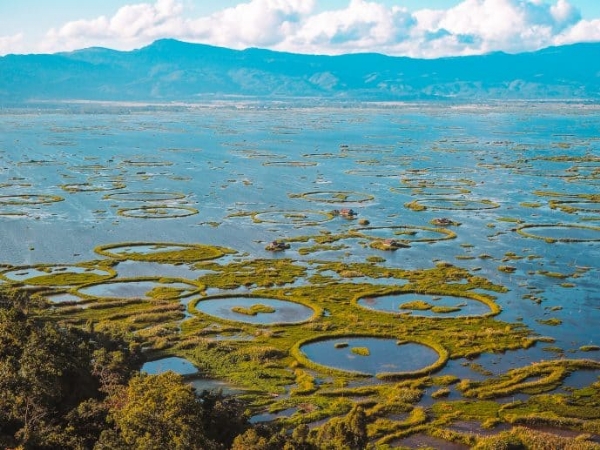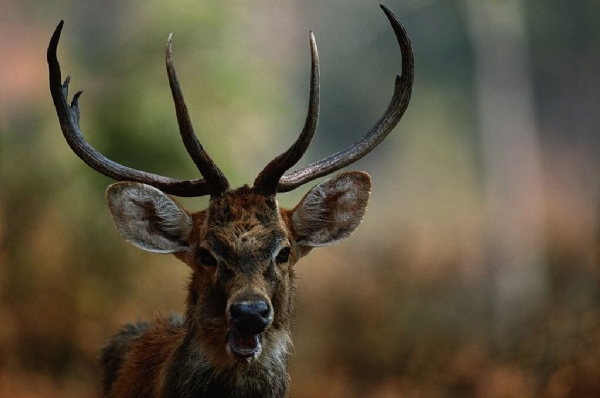Keibul Lamjao: World’s only floating National Park, in Manipur
The park is a wildlife sanctuary for the endangered Sangai deer, but now has a strong herd of over 204 males and females
Total Views |
Many of us love visiting wildlife sanctuaries and national parks during our get-aways. Naturally, most of them happen to be located in forest areas. But have you ever heard of a national park that is afloat? Yes, the place we are to explore today is the world’s only floating national park! Located on the floating Loktak Lake in Manipur, the Keibul Lamjao National Park is situated on the water. It is truly a sight for sore eyes, famous for its patches of wetland overgrown with deep floating vegetation called phumdi, and is home to some rare fauna.

About the national park -
The park covers an area of 40 km2, and plays a vital role in the ecosystem of Loktak Lake. The most beloved animal in this region is the endangered Sangai, or brow-antlered deer. In fact, the entire lake of Loktak was declared a sanctuary in 1966 in order to save the deer, which were threatened by extinction. This particular species of deer is also called Manipur’s dancing deer because of its delicate gait as it makes its way along the floating wetlands.
This park is now a wildlife sanctuary for the endangered Sangai deer. It has a strong herd of over 204 males and females, with new babies added every year! A few other species of deer seen here include the hog deer, musk deer, sambar, and muntjac. Isolated populations of these deer occur in the park and the surrounding hills.
The World’s only floating wildlife sanctuary.
— Raghu (@IndiaTales7) January 2, 2022
Can you guess the location ? pic.twitter.com/lUM3euDLvH
Among the primitive primates, the most commonly spotted ones are the slow loris, Assamese and stump-tailed macaques, and hoolock gibbon, which are restricted mainly to the hills, and the rhesus monkey.
The large Indian civet, small Indian civet, common otter, and wild boar are some of the large mammals seen in the area. The population of tiger, leopard, panther, fox, jackal and wild dog has reduced drastically, so much so that you’ll hardly spot them anymore. Other rare animals to be sighted occasionally are the wild cats like the marbled cat and Asian golden cat, Himalayan black bear, and Malayan bear.
Also Read | Jim Corbett National Park to be renamed as Ramganga National Park, says Forest Minister
A large variety of avifauna can be spotted at the Keibul Lamjao and the Loktak Lake. The birds are primarily of the smaller reed-dwelling species, like the waterfowl, hooded crane, black eagle, Shaheen falcon, eastern shite stork, bamboo partridge and green peafowl. If you are someone who finds hornbills intriguing, then you’re in for a treat. A lot of hornbill species are spotted in the park, like the brown-backed hornbill, rufous-necked hornbill, wreathed hornbill, and the great pied hornbill.
About the phumdis -
A large area of the park is entirely covered in biomasses, or decomposed plant materials, which are locally called as phumdis. These phumdis are formed naturally in a swamp marsh, and are made of organic garbage, biomass and hardened soil particles. The water is still underneath but the floating phumdis are certainly strong enough for the animals and even humans to be able to walk on! You will also spot the famous rings on the Loktak Lake. These were also formed in the same way.
History of the Sangai -
The discovery of Sangai deer was made around 1836 during the British Raj when Captain Guthrie was building the Cachar road. During the process, he captured sight of many animals in the valley, including the Sangai. During this time, Sangai could be found in Manipur in abundance.

In 1838, the Sangai came to the attention of Lieutenant Percy Eldi, who was a Political Assistant in Assam. He saw 300 of them while visiting Loktak Lake with Captain Gordon of Imphal! Captian Guthrie and Lieutenant Percy Eldi both sent off the skeletal remains of Sangai to the Calcutta Natural History Society.
Also Read | All steps will be taken to protect one-horned rhinos: PM Modi
In 1844, the society then gave the deer the name Cervus eldi eldi, in honour of Eldi, who ‘discovered’ it. After this, word soon spread amongst the British game enthusiasts in the Raj. Loktak Lake became a hunting ground - and Sangai was the main prize. It saw most of the deer population wiped out. By 1951, the Sangai was reported as extinct - until a British tea planter, Edward Pritchard Gee rediscovered a small population of them near the Loktak Lake.
He soon made the area a protected one, and declared it a national park to protect the Sangai Deer. By 1975, the park had a herd of 14 deer. Over the years, the Sangai population was able to thrive. Today, there are now reported to be over 204 of them!


